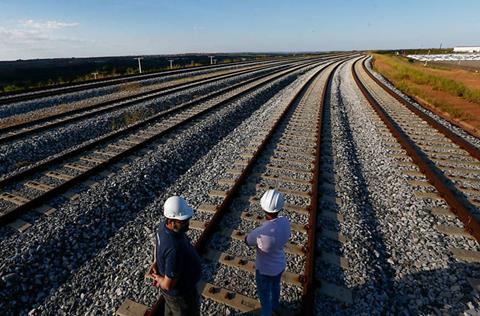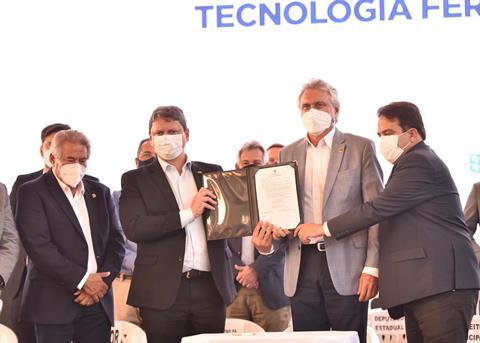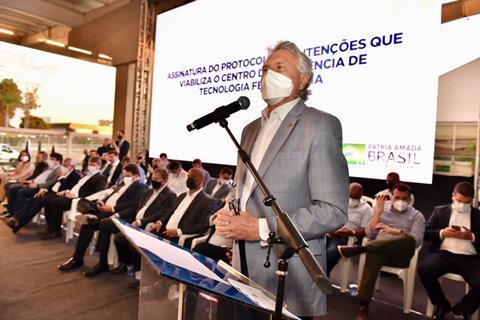
BRAZIL: Work is expected to start later this year to establish a Centre of Excellence for Railway Technology in Anápolis, following the signing of a Memorandum of Understanding between the Ministry of Infrastructure and the state government of Goiás on July 15.

Expected to be the largest railway research and development site in Latin America, the centre will be located within the Anápolis Convention Centre, not far from the alignment of the Ferrovia Norte-Sul and close to the BR-060 highway. The facility is intended to support efforts measures to standardise railway technology within Brazil, designing and developing individual prototypes and undertaking accelerated testing. The site will also undertake other research work and deliver various training initiatives.
The signing ceremony was attended by Infrastructure Minister Tarcísio Gomes de Freitas, Goiás Governor Ronaldo Caiado, the Mayor of Anápolis Roberto Naves and Sandramara Chaves, Dean of the State University of Goiás.
According to Caiado, around R$60bn will be invested in the project over the next decade. A fund to finance the development and maintenance of the centre is to be established by the National Land Transport Agency ANTT using income from railway concessionaires such as Rumo and Vale who are expected to derive benefits from the research and development that will be undertaken there.

The governor explained that the State University and other institutions would be involved in the initiative, ‘building laboratories to develop sophisticated techniques’ and meeting ‘all the demand for wagons, locomotives, rails and sleepers’. Other universities will be able to conduct rail-related research on the site, while the Military Institute of the Army will contribute to the technical and scientific training.
‘The establishment of the Centre of Excellence in Railway Technology will make Goiás more competitive’, said the governor’s Secretary of State Adriano of Rocha Lima, adding that it would ‘ensure greater efficiency in this form of transport, which is fundamental and has been halted in Brazil for over 30 years’.
Secretary of Development & Innovation Marcio Cesar Pereira anticipated that new technology developed at the site would translate into ‘support for the development of market-oriented businesses’.

















